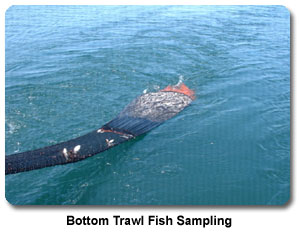- Home
- About S&T
- Taxa/Organisms
- Ecosystems
- Issues
- Methods & Tools
- Reports & Publications
- Location
- Search
Publisher: USGS | Science Center: Northern Prairie Wildlife Research Center (NPWRC, Jamestown) | Format: URL
www.npwrc.usgs.gov — Caterpillars of Pacific Northwest Forests and Woods are well represented among the total number of insects. The caterpillar is the immature stage of moths and butterflies that are abundant on certain plants at various times of the year. This booklet is a field guide with keys to the identification of caterpillars commonly found in forests and More...

Publisher: USGS | Science Center: Great Lakes Science Center (GLSC, Ann Arbor) | Format: URL
www.glsc.usgs.gov — The USGS Great Lakes Science Center (GLSC) has a long history of significant contributions to the understanding of aquatic resources in the Great The main focus of the Center's research is on the long-term dynamics of native and non-native aquatic species and the sustainability of Great Lakes fisheries. Since the Center was established, the fish More...

Publisher: USGS | Science Center: Western Fisheries Research Center (WFRC, Seattle) | Format: URL
wfrc.usgs.gov — The Popo Agie Conservation District (PACD), headquartered in Lander, Wyoming, is developing a management plan for the Popo Agie Watershed. A key component in developing an effective management plan is the need for a scientifically valid and rigorous monitoring program. Paramount in this monitoring is the need to identify leading indicators of More...

Publisher: NBII | Format: URL
pollinators.nbii.gov — The global declines in many kinds of pollinator species could potentially impact the global food supply, as many plants depend upon specific pollinators to reproduce. The Web site of the NBII Pollinators Project provides access to information about the biology, ecology, conservation status, and threats to native pollinators, pollinator-dependent More...

Publisher: USGS | Science Center: Forest and Rangeland Ecosystem Science Center (FRESC, Corvallis) | Format: URL
fresc.usgs.gov — Prescribed fire and forest thinning is a management strategy that promotes the development of forest structure and composition similar to that present under a native fire regime. This research summary describes how FRESC researchers will address the effects of prescribed fire and forest thinning on the diversity, abundance, and habitat More...
